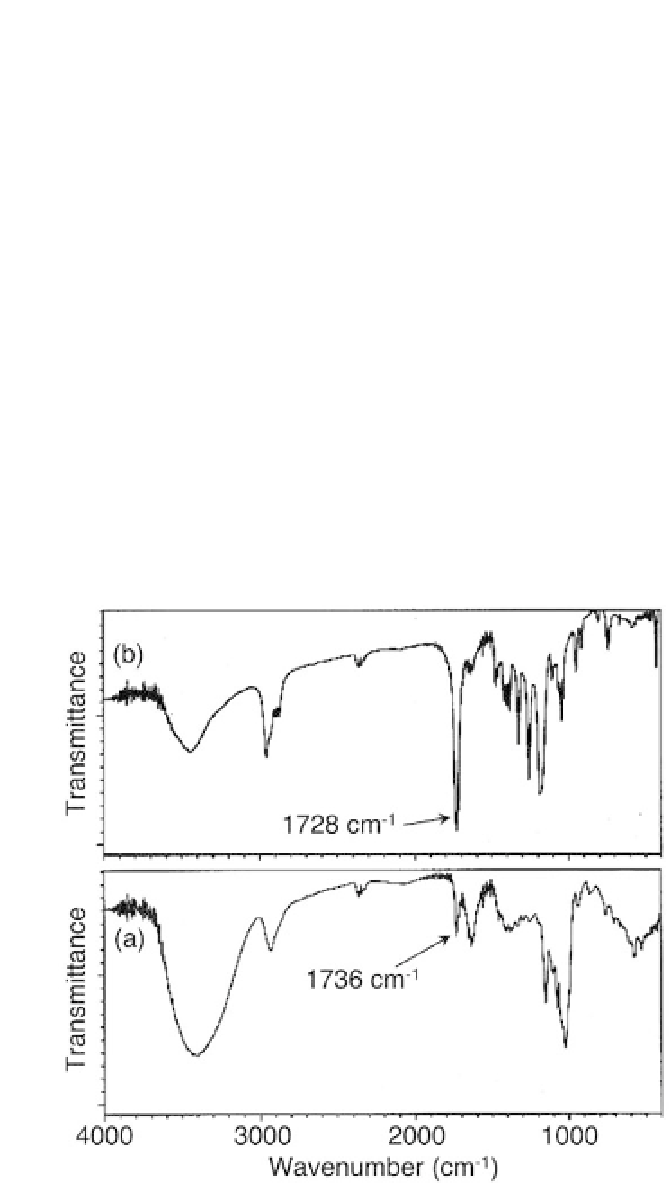Biology Reference
In-Depth Information
The IR spectrum of the PVL in the product (Fig. 7.8a) was
compared with that of the original PVL (Fig. 7.8b), and showed that
no crystalline PVL existed in the product, owing to the inclusion of
the PVL chain into the cavity of amylose. This was in good agreement
with the XRD data, in which the XRD profile of PVL showed strong
crystalline peaks, whereas no such peaks were observed at all in the
XRD profile of the product. The same results were obtained in the IR
and XRD analyses of the product from PCL.
As the other guest polyester, a hydrophobic poly(ester-ether)
(PEE) was employed in the formation of the inclusion complex [30].
The preparation of the inclusion complex using PEE was attempted
in an experimental manner similar to that using the above polyesters
(Fig. 7.2e). The structure of the product was determined by means
of the
1
H NMR and XRD measurements to be the inclusion complex.
When the hydrophilic poly(ester-ether) (-CH
O-)
was used as the guest polymer, no inclusion complex was formed.
This result indicated that the hydrophobicity of the guest polymers
strongly affected the formation of the inclusion complexes.
CH
C(=O)OCH
CH
2
2
2
2
Figure 7.8
IR spectra of the product obtained from PVL (a) and the original
PVL (b).


